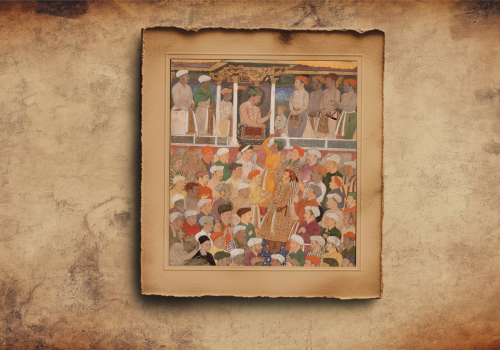As the balance was not forthcoming soon enough, Lal Singh was tortured. This embittered him and he became a rebel against his father, who on his release from Delhi interned him at Kaithal. When Desu Singh died in 1781, Lal Singh was still in confinement. His elder brother Bahal Singh did all he could to keep him in prison, but Lal Singh contrived to escape, killed Bahal Singh and took possession of all the estates of his father. He was a politically shrewd person and could clearly see where his advantage lay. He had great influence with Raja Bhag Singh of Jind;he befriended the powerful Diwan Nanu Mall of Patiala, and in the family dispute in the ruling family there he supported Rani As Kaur against the weak minded Raja Sahib Singh.
This strategy enabled him to retain possession of a few villages in distant districts of Fatehabad and Sirsa. He responded to the call of Baba Sahib Singh Bedi for a religious war against the Afghans of Raikot in 1798 and grabbed Rai Ilyas` fort of Wakha and its surrounding territory. He joined hands with the Marathas to wipe out the British adventurer, George Thomas, in 1802, but was astute enough to perceive the rising influence of the British and, along with Raja Bhag Singh, joined hands with them on 15 September 1803, preventing the Marathas from making further inroads. According to Sir Lepel Griffin, “Lal Singh was, at the time of the British advance northwards, in 1809, the most powerful cisSutlej chief, after the Raja of Patiala.” In 1819, Bhai Karam Singh, son of Bhai Dhanna Singh and first cousin of Bhai Lal Singh, died. Both his widow, Mai Bhagbhari, and Bhai Lal Singh made claims to his estates. The British government, however, allowed the latter to succeed to the estates with a small maintenance grant to the widow. Bhai Lal Singh died at Kaithal soon after.
References :
1. Griffin, Lepel, The Rajas of the Punjab [Reprint]. Delhi, 1977
2. Gupta, Hari Ram, History of the Sikhs, vol. II. Delhi, 1978
3. Santokh Singh, Bhai, Garb Canjani Tika. Lahore, 1910


